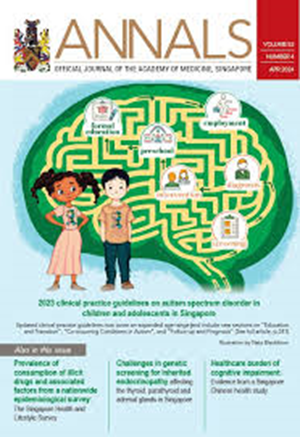Drug interactions between common dermatological medications and the oral anti-COVID-19 agents nirmatrelvir-ritonavir and molnupiravir.
IF 5.2
4区 医学
Q2 Medicine
引用次数: 3
Abstract
INTRODUCTION The oral antiviral agents nirmatrelvir-ritonavir (NMV/r) and molnupiravir are used to treat mild-to-moderate COVID-19 infection in outpatients. However, the use of NMV/r is complicated by significant drug-drug interactions (DDIs) with frequently prescribed medications. Healthcare professionals should be aware of the possible risk of DDIs, given the emergence of COVID-19 variants and the widespread use of oral COVID-19 treatments. We reviewed available data on DDIs between NMV/r, molnupiravir and common dermatological medications; summarised the potential side effects; and suggest strategies for safe COVID-19 treatment. METHOD A systematic review using PubMed was conducted on data published from inception to 18 July 2022 to find clinical outcomes of DDIs between NMV/r, molnupiravir and dermatological medications. We also searched the Lexicomp, Micromedex, Liverpool COVID-19 Drug Interactions database and the National Institutes of Health COVID-19 Treatment Guidelines for interactions between NMV/r and molnupiravir, and commonly used dermatological medications. RESULTS NMV/r containing the cytochrome P-450 (CYP) 3A4 inhibitor ritonavir has DDIs with other medications similarly dependent on CYP3A4 metabolism. Dermatological medications that have DDIs with NMV/r include rifampicin, clofazimine, clarithromycin, erythromycin, clindamycin, itraconazole, ketoconazole, fluconazole, bilastine, rupatadine, dutasteride, ciclosporin, cyclophosphamide, tofacitinib, upadacitinib, colchicine and systemic glucocorticoids. With no potential DDI identified yet in in vitro studies, molnupiravir may be an alternative COVID-19 therapy in patients taking medications that have complicated interactions with NMV/r, which cannot be stopped or dose adjusted. CONCLUSION NMV/r has significant DDIs with many common dermatological medications, which may require temporary discontinuation, dosage adjustment or substitution with other anti-COVID-19 agents such as molnupiravir.常见皮肤病药物与口服抗covid -19药物尼马特利韦-利托那韦和莫努匹拉韦的药物相互作用。
简介口服抗病毒药物nirmatrevir-ritonavir(NMV/r)和莫努匹拉韦用于治疗门诊中轻度新冠肺炎感染。然而,NMV/r的使用因与经常处方的药物的显著药物相互作用(DDI)而变得复杂。鉴于新冠肺炎变异的出现和新冠肺炎口服治疗的广泛使用,医疗保健专业人员应意识到DDI的可能风险。我们回顾了NMV/r、莫努匹拉韦和常见皮肤科药物之间DDI的可用数据;总结了潜在的副作用;并提出安全治疗新冠肺炎的策略。方法使用PubMed对从开始到2022年7月18日发表的数据进行系统审查,以发现NMV/r、莫努匹拉韦和皮肤科药物之间的DDI的临床结果。我们还搜索了Lexicomp、Micromedex、Liverpool新冠肺炎药物相互作用数据库和美国国立卫生研究院新冠肺炎治疗指南,了解NMV/r和莫努匹拉韦之间的相互作用,以及常用的皮肤科药物。结果含有细胞色素P-450(CYP)3A4抑制剂利托那韦的MV/r与其他类似依赖CYP3A4代谢的药物具有DDI。具有NMV/r DDI的皮肤病药物包括利福平、氯法齐明、克拉霉素、红霉素、克林霉素、伊曲康唑、酮康唑、氟康唑、双司汀、鲁帕他定、杜他星、环孢素、环磷酰胺、托法替尼、乌帕替尼、秋水仙碱和全身性糖皮质激素。由于在体外研究中尚未确定潜在的DDI,莫努匹拉韦可能是服用与NMV/r有复杂相互作用的药物的患者的新冠肺炎替代疗法,这些药物无法停止或调整剂量。结论NMV/r与许多常见的皮肤病药物有显著的DDI,可能需要暂时停药、调整剂量或用其他抗COVID-19药物(如莫努匹拉韦)替代。
本文章由计算机程序翻译,如有差异,请以英文原文为准。
求助全文
约1分钟内获得全文
求助全文
来源期刊

Annals Academy of Medicine Singapore
医学-医学:内科
CiteScore
4.90
自引率
5.80%
发文量
186
审稿时长
6-12 weeks
期刊介绍:
The Annals is the official journal of the Academy of Medicine, Singapore. Established in 1972, Annals is the leading medical journal in Singapore which aims to publish novel findings from clinical research as well as medical practices that can benefit the medical community.
 求助内容:
求助内容: 应助结果提醒方式:
应助结果提醒方式:


